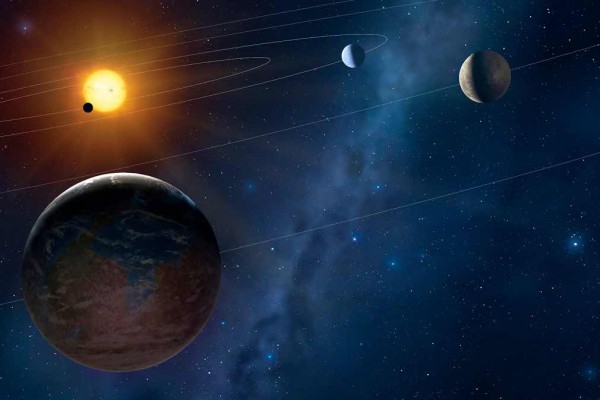A molecule that exhibits a specific property associated with all life on Earth has been discovered in interstellar space for the first time. Displaying the quality of chirality, or “handedness”, this molecule has a distinct one-way molecular geometry found only in biological building blocks like amino acids, proteins, and enzymes. This discovery may help provide answers to the origins of homochirality, whereby all a substance’s molecules are of the same chiral form, and why it appears so important for biology.
(Article by Colin Jeffrey)
The molecule in question, propylene oxide (CH3CHOCH2), was discovered near the center of our Galaxy in the region known as Sagittarius B2 (Sgr B2) using the Parkes radio telescope in Australia and the Green Bank Telescope (GBT) in West Virginia. Sited in an area of star-forming dust and gas, the molecule was identified as part of an on-going collaborative search effort known as the Prebiotic Interstellar Molecular Survey.
“This is the first molecule detected in interstellar space that has the property of chirality, making it a pioneering leap forward in our understanding of how prebiotic molecules are made in the Universe and the effects they may have on the origins of life,” said Brett McGuire, a chemist with the National Radio Astronomy Observatory (NRAO) in Charlottesville, Virginia.
Chirality (from the Greek “chiral”, meaning “hand”) found in molecules associated with life dictates that they exist in arrangements like our own hands, in that they are asymmetric in a way that their structure and its mirror image are not superimposable – that is, just as our right hand’s mirror opposite, the left, does not match when placed over our right. In biological molecules, the amino acids that make up proteins, for example, only take the left-handed form, while the sugars that make up DNA are solely right-handed. This trait, known as homochirality, is a clear marker for identifying all molecules essential to life.
“Understanding how this came about is a major puzzle in biology,” said Dr John Reynolds, Director of Operations at CSIRO Astronomy and Space Science. “This discovery gives us a window into how an incredibly important type of molecule is made in space, and gives us the chance to understand the impact that process may have on life in the universe.”
Over 180 different molecules have been discovered in space thus far. However chiral molecules, though essential to life on Earth and found in meteorites on Earth and comets in our solar system, had not previously been detected in interstellar space.
To form complex molecules like propylene oxide, the researchers believe that thin layers of ice that accrete on dust grains in the interstellar clouds enable small molecules to link together into larger, more complex, structures. When the ice melts, the molecules can then migrate with the resulting evaporation from the surface of the grains into the surrounding gas cloud, where they can be detected by radio telescopes via their particular electromagnetic signature.
“Propylene oxide is among the most complex and structurally intricate molecules detected so far in space,” said Brandon Carroll, chemistry graduate student at the California Institute of Technology in Pasadena. “Detecting this molecule opens the door for further experiments determining how and where molecular handedness emerges and why one form may be slightly more abundant than the other.”
According to the researchers, further investigations of how polarized light interacts with the molecules (that is, where each left and right version will rotate the polarization in opposite directions) may one day determine if there is an excess of single-handedness of propylene oxide over the other and hopefully assist research to better understand the role homochirality plays in producing life on Earth.
Read more at: gizmag.com
















